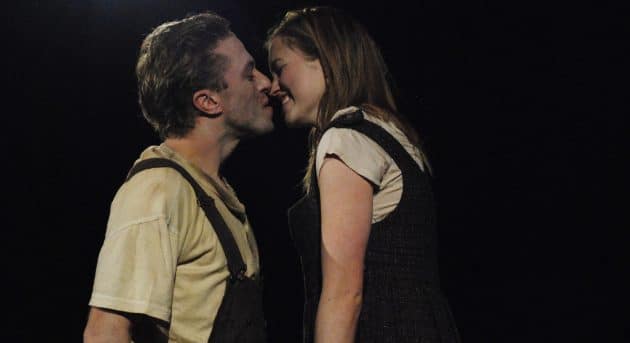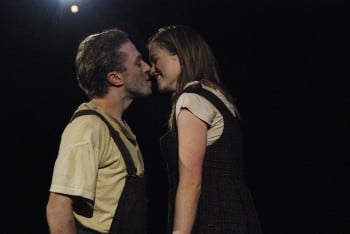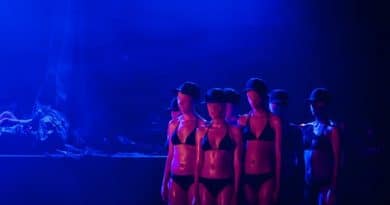Brink Production’s The Aspirations of Daise Morrow
From the first oozings over the audience chatter, of the live music from the very accomplished Zephyr Quartet, to the very first sentence from the actors, it was clear that this was no ordinary piece of theatre.
The audience is part of the acting area, sitting in a large circle, not so much sharing the acting and music-playing space as being integrated with the actors and musicians as they show what Director Chris Drummond describes as “a timeless story about seizing the day, about following one’s instincts, taking a chance and not letting the bastards grind you down.”
This is clearly theatre for grown-ups. The writings of Patrick White, who wrote the short story Down at the Dump, from which this play is adapted, is often deliciously dense, and not always immediately accessible to all. All the more credit then, to the adapters who made such a piece of theatre out of it.
The smell of dead grass underfoot, which completely covers the floor of the Theatre, and Patrick White’s words and eminently poetic writing conspire together to evoke the dump, as the protagonists scavenge through the dross and the complexities of mundane and constrained suburban life and death. This is neatly supported and the emotions and moods intensified by the subtle playing of the Quartet throughout, including shades of “Abide with Me” and of “Kumbaya” as an accompaniment to the funeral of Daise Morrow.
All four actors synthesise the anguish of growing up in an isolated, controlled and constrained family and community, bounded by what others think, limited goals and aspirations, sadness and emptiness. Paul Blackwell shows his accomplished flexibility as he masterfully moves from being a carefree but limited Mr Whalley, to a Priest, and to a hidebound and miserable Mrs Hogben, grappling with what the neighbours think, the loss of her sister and her aspirations, and the waywardness of her daughter’s dalliance with young Whalley. All actors manage these multiple roles, genders, time frames and emotions, as well as the fusion of characterisation with narrative, with skill and panache.
Kris McQuade leads defiantly with her expressive chin, Lucy Lehman in one of her first professional roles acquits herself excellently as the younger woman, and James Smith has a fine range of emotions and personas, although his parts of the narrative, as distinct from his dialogue, sometimes smacked of reading out loud rather than telling the story. But perhaps this was deliberate, suiting the Patrick White literary purity.
Design by Michael Hankin and lighting by Nigel Levings were brilliantly intrinsic to the architecture of the story and the writing. A large canopy over the entire acting and audience area provides the prefect screen to enfold all participants in the space, as well as a changing sky above the unfolding story. And wrapping all this creativity together is the sensitive playing of the specially written score by the Zephyr Quartet, without which the whole could have become fragmented. All together, a unique and intimate experience which lifts the mundane and the inevitable to another plane of understanding.




